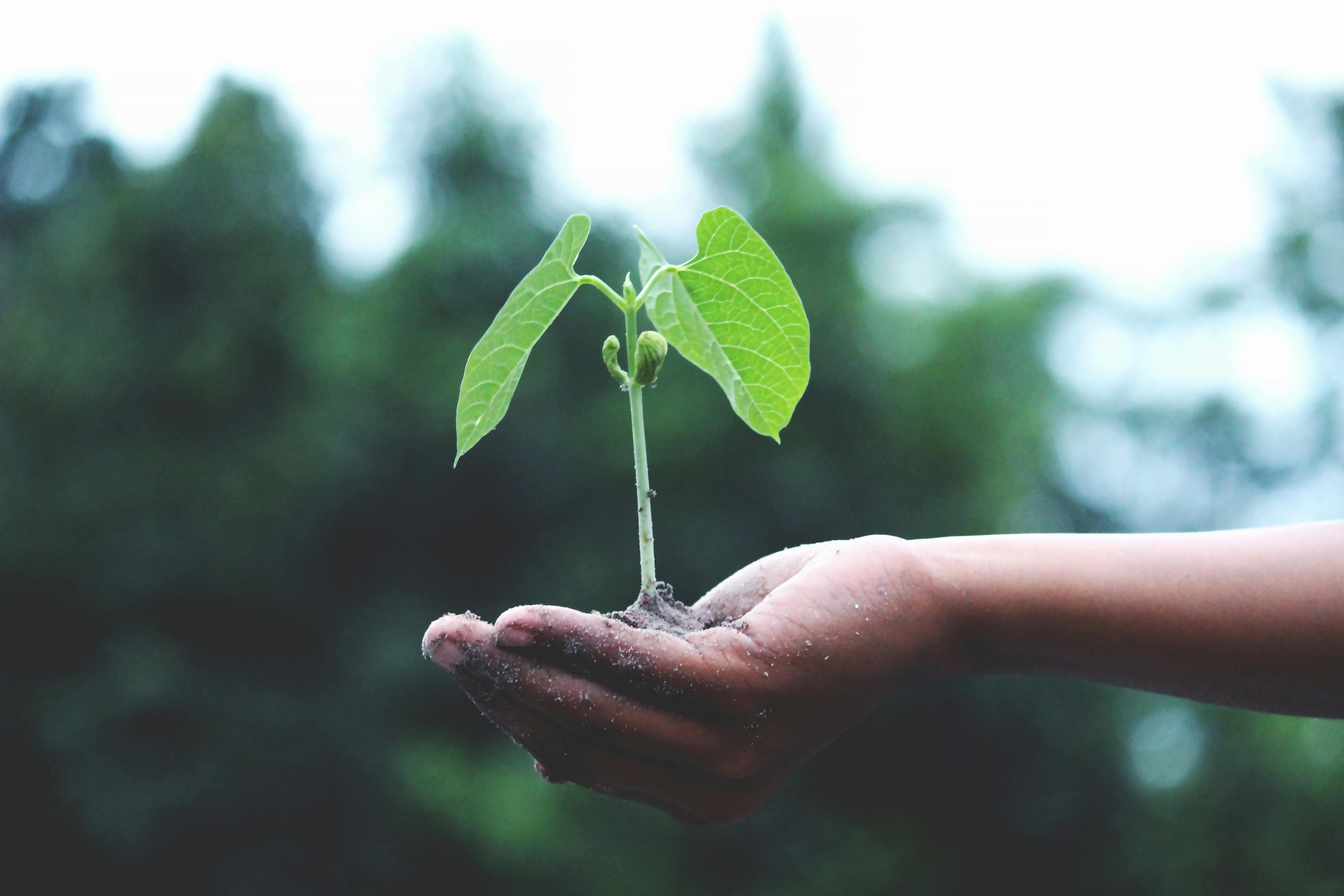If you’re looking to make your home more eco-friendly, implementing green home improvements is the way to go. In this article, you’ll discover a variety of practical tips and ideas to help you transform your living space into an environmentally conscious oasis. From energy-efficient appliances to sustainable building materials, you’ll learn how small changes can have a big impact on reducing your carbon footprint and creating a healthier home for you and your loved ones. Get ready to embark on a journey towards a greener future right from the comfort of your own home.

- 1. Assess Your Home’s Energy Usage
- 2. Upgrade to Energy-Efficient Appliances
- 3. Improve Insulation and Air Sealing
- 4. Optimize Heating and Cooling Systems
- 5. Harness the Power of Renewable Energy
- 6. Conserve Water
- 7. Reduce Waste and Use Sustainable Materials
- 8. Promote Indoor Air Quality
- 9. Implement Smart Home Technology
- 10. Seek Professional Assistance
1. Assess Your Home’s Energy Usage
1.1 Calculate Your Home’s Energy Consumption
Before you can start implementing green home improvements, it’s important to understand how much energy your home is currently consuming. By calculating your energy consumption, you can identify areas where you can make changes to reduce your energy usage. Start by looking at your utility bills and making note of your monthly energy consumption.
1.2 Identify Energy Inefficiencies
Once you have a clear understanding of your home’s energy consumption, it’s time to identify any energy inefficiencies. This could include appliances that are outdated and not energy-efficient, areas in your home that are poorly insulated, or drafts and air leaks that contribute to energy waste. Take the time to assess each area of your home and make note of any potential inefficiencies.
1.3 Conduct an Energy Audit
To get a comprehensive assessment of your home’s energy usage, consider conducting an energy audit. This can be done by a professional or through a DIY audit using online resources. An energy audit will provide you with detailed information about where energy is being wasted in your home and help you prioritize which improvements to tackle first.
2. Upgrade to Energy-Efficient Appliances
2.1 Replace Old Appliances with Energy Star Certified Models
One of the easiest and most effective ways to improve your home’s energy efficiency is by replacing old appliances with energy-efficient models. Look for appliances that are Energy Star certified, as they meet strict energy efficiency guidelines set by the Environmental Protection Agency. This includes appliances such as refrigerators, dishwashers, washing machines, and more. Not only will you save energy, but you may also be eligible for rebates or incentives when purchasing Energy Star appliances.
2.2 Choose Energy-Efficient Lighting Options
Another simple way to make your home more energy-efficient is by switching to energy-efficient lighting options. Replace traditional incandescent light bulbs with energy-saving LED or compact fluorescent bulbs. These bulbs use significantly less energy and last much longer than traditional bulbs. Additionally, consider using motion sensors or timers for outdoor lighting to reduce unnecessary energy usage.
2.3 Install Smart Thermostats
Upgrading to a smart thermostat is a smart investment for green home improvements. These thermostats allow you to program and control your home’s heating and cooling systems based on your schedule and preferences. By optimizing your HVAC system’s usage, you can save energy and reduce your utility bills. Some smart thermostats even learn your behavior and adjust the temperature automatically to maximize energy efficiency.
3. Improve Insulation and Air Sealing
3.1 Insulate Your Attic and Walls
Proper insulation is essential for maintaining an energy-efficient home. Start by insulating your attic and walls, as these are areas where a significant amount of heat can escape during the winter and enter during the summer. Consider using eco-friendly insulation materials, such as cellulose insulation made from recycled materials. Proper insulation will not only help save energy but also improve the comfort of your home.
3.2 Seal Drafts and Air Leaks
Drafts and air leaks around windows, doors, and other areas of your home can significantly contribute to energy waste. Use weatherstripping and caulking to seal these gaps and prevent conditioned air from escaping and unconditioned air from entering. This will help maintain a consistent temperature in your home and reduce the strain on your heating and cooling systems.
3.3 Upgrade Windows and Doors
Older windows and doors are often less energy-efficient due to poor insulation and outdated materials. Consider upgrading to energy-efficient windows and doors to enhance your home’s energy efficiency. Look for windows and doors that are Energy Star certified and have high insulation ratings. These upgrades can reduce drafts, improve comfort, and save you money on energy bills.
4. Optimize Heating and Cooling Systems
4.1 Maintain and Tune-Up Existing HVAC Systems
Regular maintenance and tune-ups are essential for keeping your heating and cooling systems operating at peak efficiency. Schedule annual maintenance appointments with a professional HVAC technician to ensure your systems are functioning properly. This includes cleaning or replacing filters, checking refrigerant levels, and inspecting ductwork for any leaks. Proper maintenance can extend the lifespan of your systems, improve energy efficiency, and prevent costly breakdowns.
4.2 Consider Upgrade to Energy-Efficient HVAC Systems
If your heating and cooling systems are outdated or not functioning efficiently, it may be time to consider an upgrade. Energy-efficient HVAC systems can provide significant energy savings and reduce your carbon footprint. Look for systems that have high energy efficiency ratings and consider options such as heat pumps, geothermal systems, or ductless mini-split systems. Don’t forget to check for available rebates or incentives that can help offset the cost of the upgrade.
4.3 Use Programmable Thermostats
In addition to installing smart thermostats, utilize programmable thermostats to optimize the energy usage of your heating and cooling systems. Program your thermostat to adjust the temperature based on your schedule, so you’re not wasting energy cooling or heating your home when it’s unoccupied. By using a programmable thermostat, you can save energy and reduce your heating and cooling costs without sacrificing comfort.

5. Harness the Power of Renewable Energy
5.1 Install Solar Panels
Solar panels are a popular and environmentally friendly way to generate renewable energy for your home. By installing solar panels on your roof or in your yard, you can harness the power of the sun to generate electricity. Solar panels can significantly reduce your reliance on traditional energy sources and lower your utility bills. Additionally, many governments and utility companies offer incentives or tax credits for installing solar panels.
5.2 Utilize Wind Power
If you live in an area with consistent wind patterns, you may consider utilizing wind power as a renewable energy source. Installing a wind turbine on your property can generate electricity to power your home. However, it’s important to note that wind turbines require sufficient space and appropriate zoning regulations. Research local regulations and consult with professionals to determine if wind power is a viable option for your home.
5.3 Explore Geothermal Heating and Cooling
Geothermal heating and cooling systems utilize the stable temperature of the earth to heat and cool your home. By tapping into the earth’s natural heat through geothermal heat pumps, you can efficiently heat and cool your home while reducing energy consumption. Geothermal systems are highly efficient and can significantly lower your heating and cooling costs over time. However, installation can be complex and requires professional expertise.
6. Conserve Water
6.1 Install Water-Saving Fixtures
Conserving water is just as important as conserving energy when it comes to green home improvements. Install water-saving fixtures such as low-flow showerheads, faucets, and dual-flush toilets to reduce water usage without sacrificing performance. These fixtures use less water without compromising the overall experience, helping you save water and money on your water bills.
6.2 Harvest Rainwater
Consider harvesting rainwater to supplement your water needs. Installing a rainwater harvesting system allows you to collect rainwater from rooftops and store it for later use. This water can be used for irrigation, washing cars, flushing toilets, and other non-potable purposes. Harvesting rainwater not only conserves water but also reduces the strain on local water supplies.
6.3 Landscape with Drought-Resistant Plants
Choose drought-resistant plants for your landscaping to reduce water consumption. These plants are adapted to thrive in arid conditions and require less water than traditional plants. Additionally, consider incorporating mulch around plants to retain moisture and minimize evaporation. By landscaping with drought-resistant plants, you can maintain a beautiful yard while reducing water usage.

7. Reduce Waste and Use Sustainable Materials
7.1 Practice Waste Reduction Strategies
Reducing waste is an essential aspect of green home improvements. Implement waste reduction strategies such as recycling, composting, and reducing single-use items. Separate recyclables from trash and compost organic waste to minimize the amount of waste sent to landfills. Additionally, opt for reusable alternatives to disposable products whenever possible.
7.2 Recycle and Compost
Make recycling and composting a regular part of your household routine. Set up designated recycling bins for materials such as paper, plastic, glass, and metal. Compost organic waste such as food scraps, yard trimmings, and coffee grounds to create nutrient-rich compost for your garden. By recycling and composting, you can divert waste from landfills and contribute to a more sustainable environment.
7.3 Choose Sustainable Building Materials
When undertaking any home improvement projects, choose sustainable building materials whenever possible. Look for materials that are made from recycled or renewable resources, such as bamboo flooring or recycled content countertops. Opt for low or zero VOC (volatile organic compound) paints and finishes to improve indoor air quality. Using sustainable building materials minimizes the impact on the environment and promotes a healthier living space.
8. Promote Indoor Air Quality
8.1 Use Low-VOC Paints and Finishes
Conventional paints and finishes often contain high levels of VOCs, which can contribute to poor indoor air quality. Opt for low-VOC or zero-VOC paints and finishes when painting or refinishing your home. These products emit fewer toxic fumes, promoting healthier indoor air quality for you and your family.
8.2 Improve Ventilation
Proper ventilation is crucial for maintaining a healthy indoor environment. Make sure your home is adequately ventilated by opening windows and using exhaust fans in high-moisture areas such as bathrooms and kitchens. Consider installing energy-efficient ventilation systems to ensure a constant supply of fresh air while reducing energy waste.
8.3 Eliminate Indoor Pollutants
Identify and eliminate indoor pollutants that may impact air quality. This can include removing old carpeting, which can trap dust and allergens, or using air purifiers to filter out pollutants. Regularly clean and maintain HVAC systems to prevent the buildup of dust and allergens. By taking steps to eliminate indoor pollutants, you can create a healthier living environment for you and your family.
9. Implement Smart Home Technology
9.1 Use Energy Monitoring Systems
Smart home technology can play a significant role in improving energy efficiency. Install energy monitoring systems that provide real-time data on your energy consumption. This information can help you identify areas where energy is being wasted and make adjustments to reduce consumption. By being more aware of your energy usage, you can make informed decisions on how to optimize energy efficiency in your home.
9.2 Incorporate Home Automation
Take advantage of home automation to optimize energy usage. Use smart plugs and smart power strips to control and schedule the operation of electronics and appliances. This allows you to turn off devices remotely or automatically when not in use, reducing standby power consumption. Additionally, consider automating lighting systems to adjust brightness levels based on natural light and occupancy.
9.3 Sync Devices to Optimize Energy Efficiency
Syncing smart devices can further enhance your home’s energy efficiency. For example, syncing your smart thermostat with your lighting system can allow the thermostat to adjust the temperature based on occupancy or natural light levels. By syncing devices, you can automate energy-saving routines and maximize efficiency throughout your home.
10. Seek Professional Assistance
10.1 Consult with Energy Efficiency Experts
If you’re unsure where to start or need guidance throughout the green home improvement process, don’t hesitate to consult with energy efficiency experts. These professionals have the knowledge and expertise to assess your home’s energy usage and recommend tailored solutions. They can provide valuable insights and ensure that your efforts are focused on the most effective and efficient improvements.
10.2 Research Available Grants and Incentives
Before making any major investments in green home improvements, research available grants and incentives that can help offset the cost. Many governments, utility companies, and non-profit organizations offer financial assistance or rebates for energy-efficient upgrades. Take the time to explore these options to make your green home improvements more affordable.
10.3 Hire Accredited Contractors
If you decide to hire contractors for any of your green home improvement projects, ensure they are accredited and experienced in energy-efficient practices. Look for contractors who specialize in eco-friendly renovations and have certifications such as LEED (Leadership in Energy and Environmental Design). Hiring reputable and knowledgeable contractors will ensure that your projects are executed properly and contribute to the overall energy efficiency of your home.
In conclusion, implementing green home improvements is not only beneficial for the environment but also for your wallet. By assessing your home’s energy usage, upgrading to energy-efficient appliances, improving insulation and air sealing, optimizing heating and cooling systems, harnessing renewable energy, conserving water, reducing waste, promoting indoor air quality, implementing smart home technology, and seeking professional assistance, you can make significant strides towards a more sustainable and energy-efficient home. Take one step at a time and enjoy the long-term benefits of a greener lifestyle.







